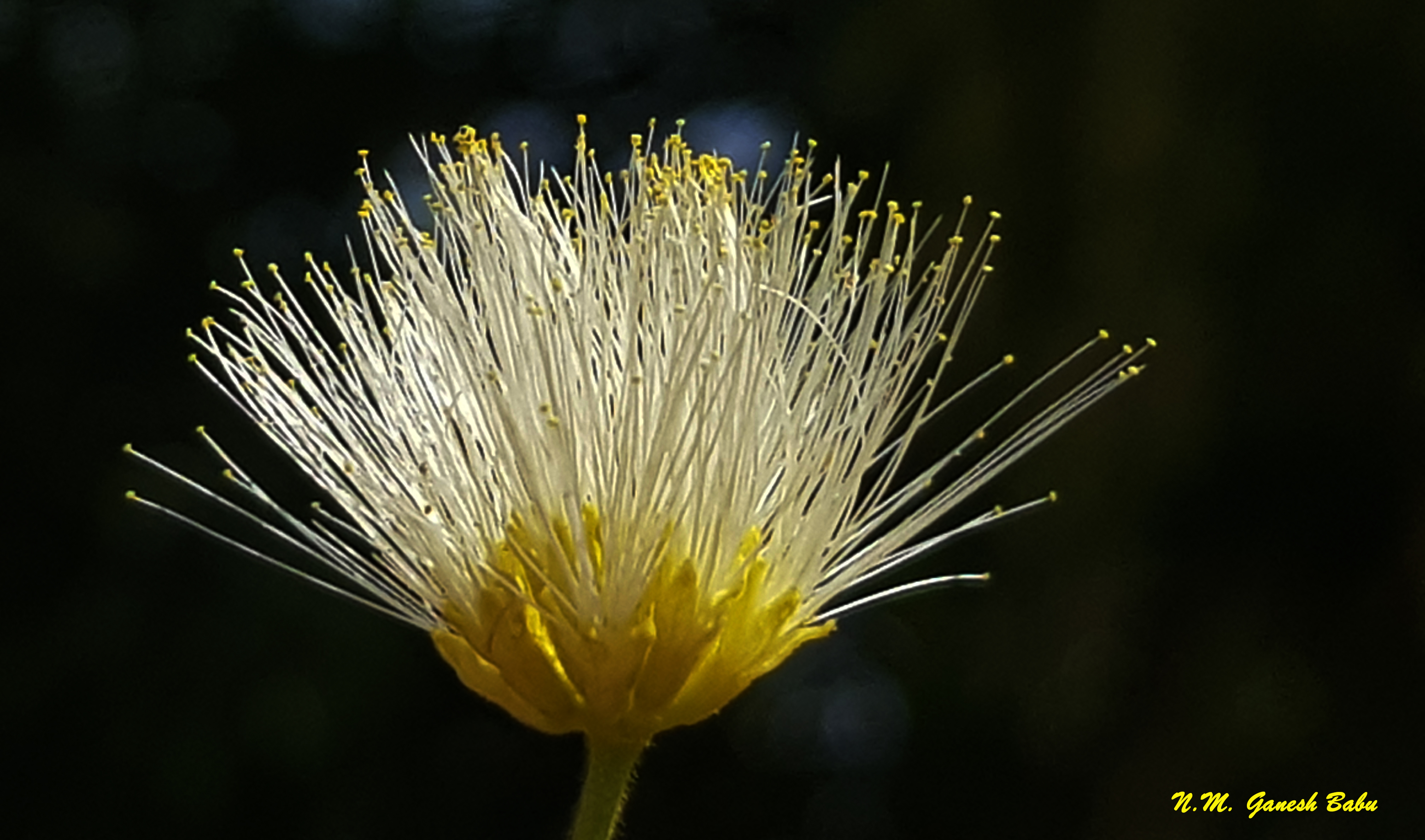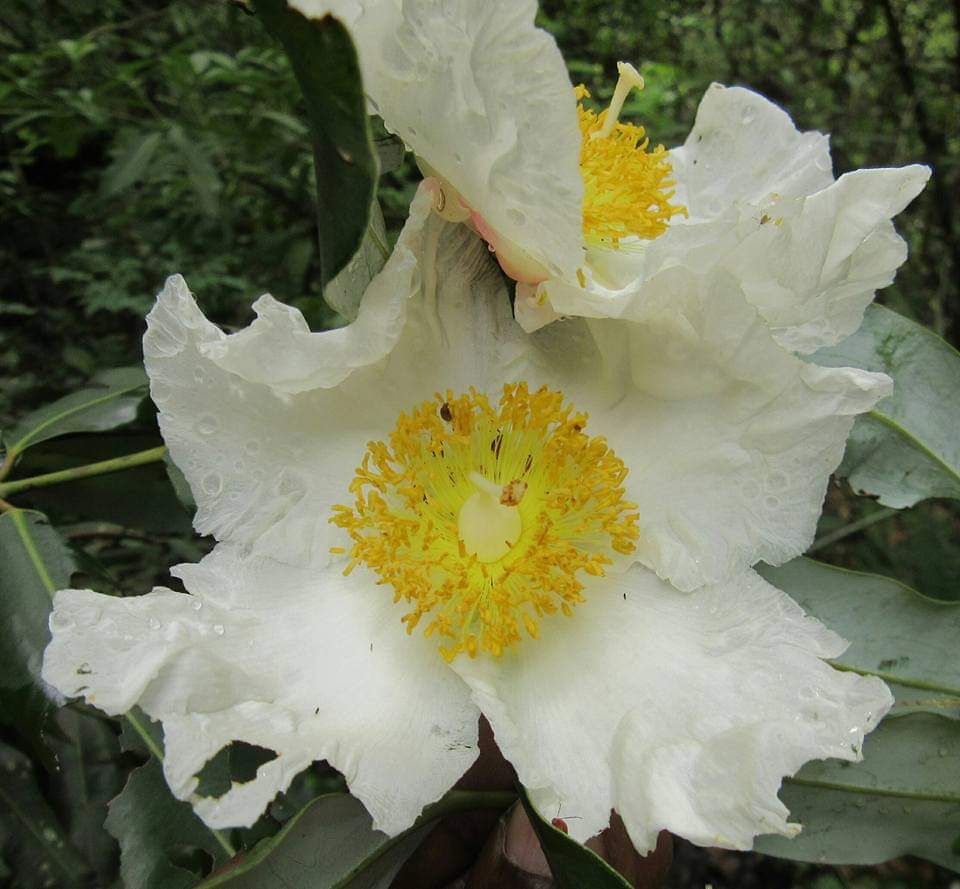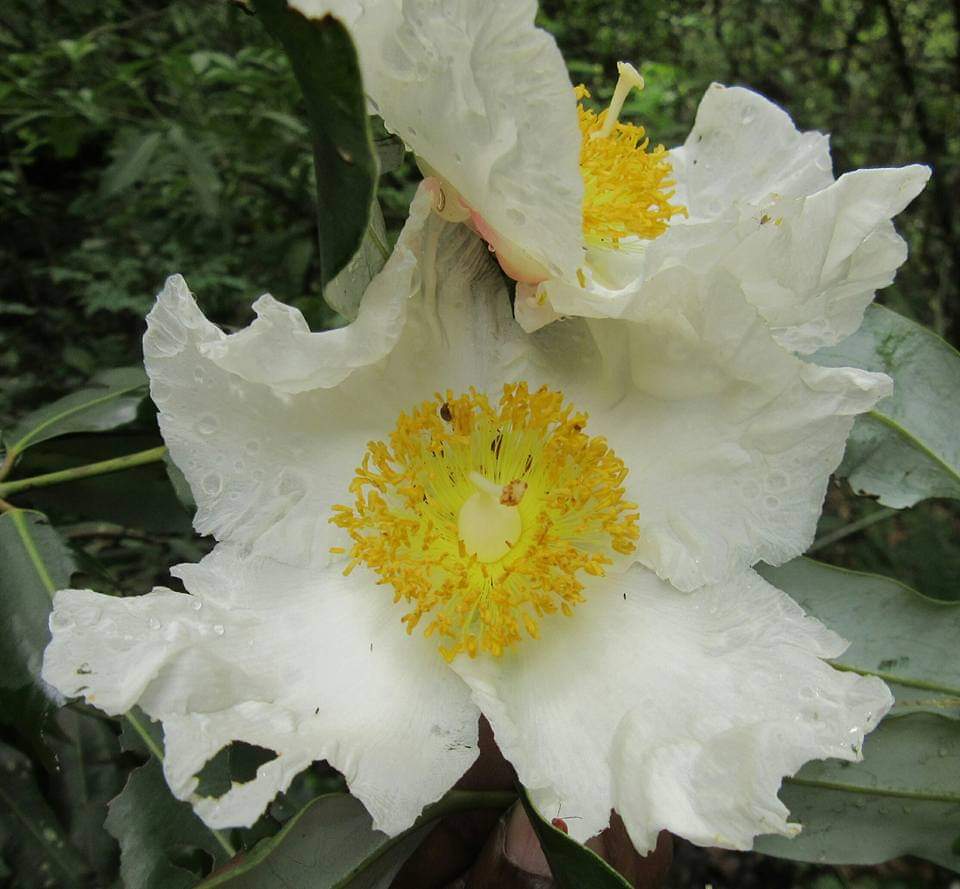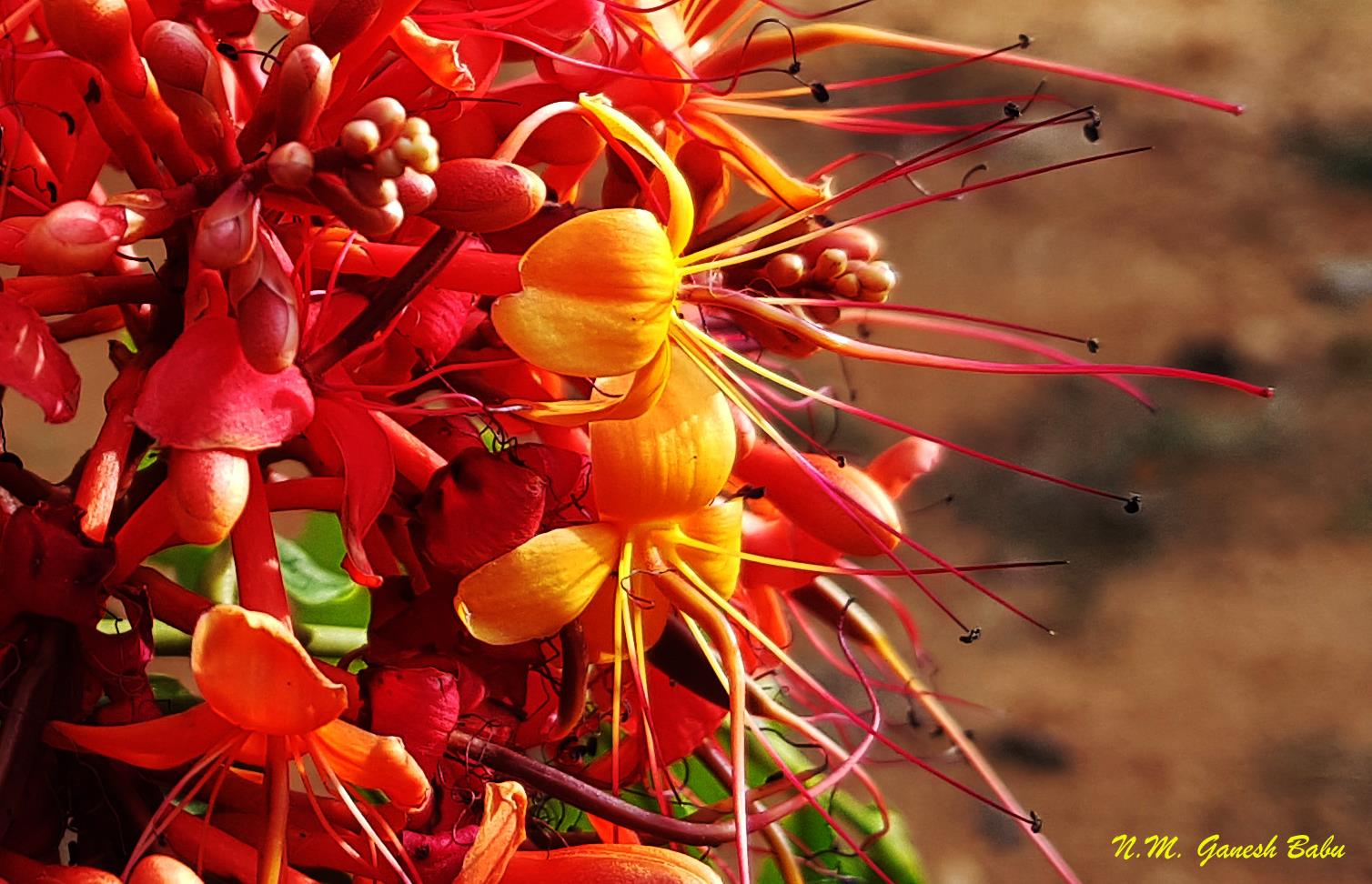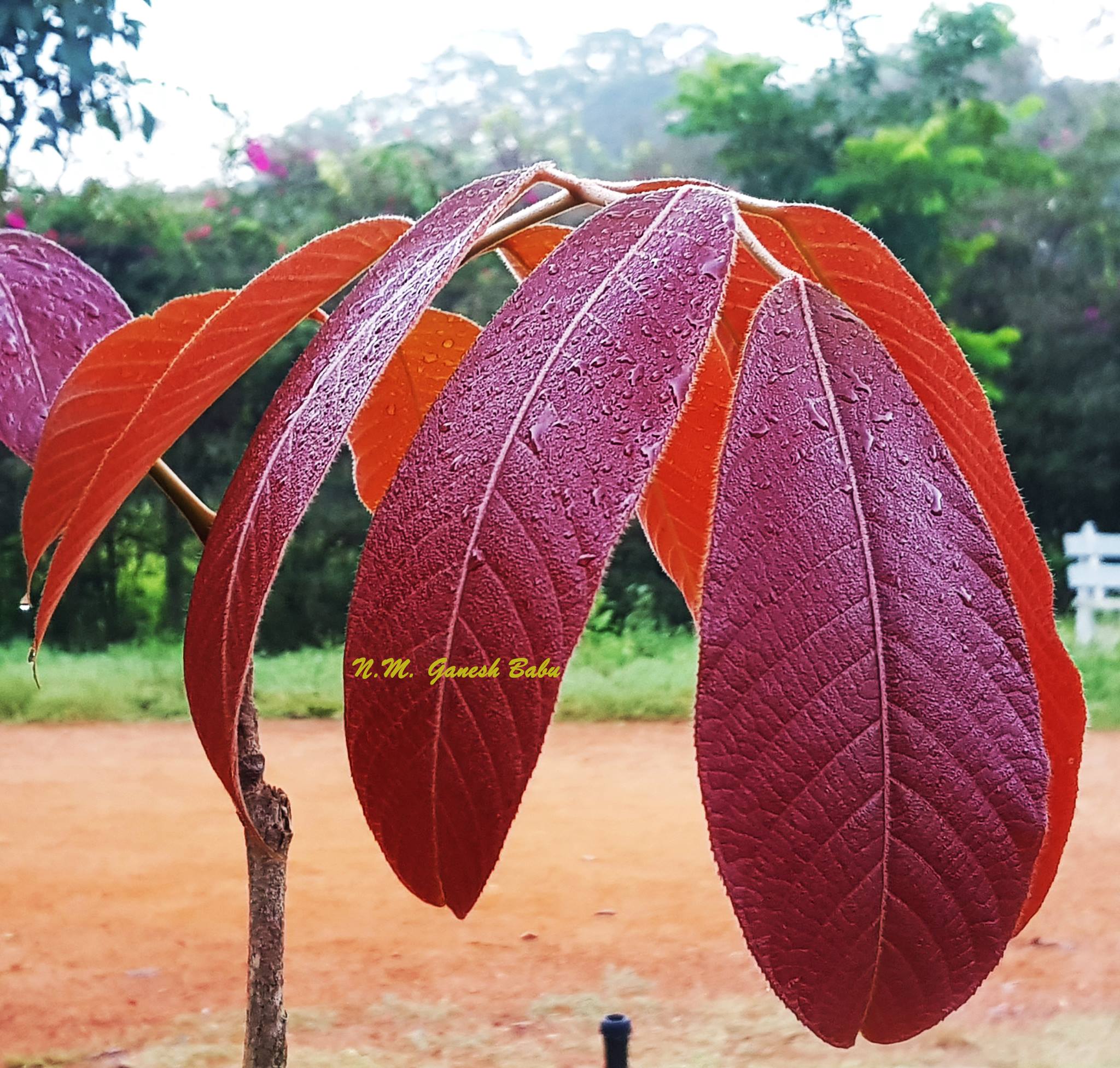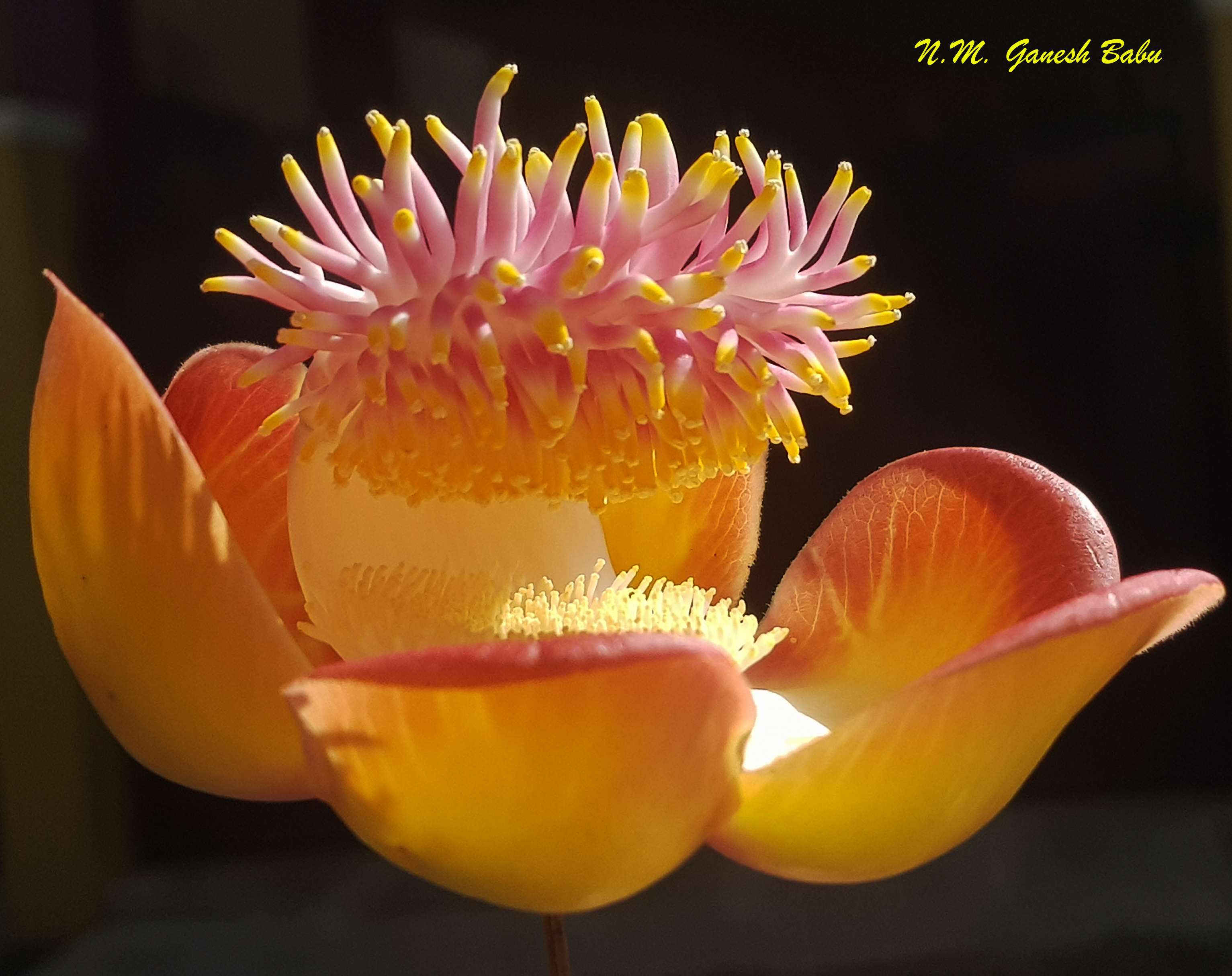

Couroupita guianensis
Mediumsized tree, appearing more massive due to dense tangle of long dangling branchlets that emerge and cover lower trunk. Bark greyish-brown, fissured. Leaves smooth to slightly velvety arranged spirally at the end of branches. Flowers; produced in racemes directly on the trunk or branches. Complex nectar less structures, each consisting of 6 large and fleshy-waxy petals that are red to orange on the inside and yellow on the outside, a disk of numerous short and yellow ring-stamens arranged around reduced styles and stamens, and a pink-white anemone-like structure of hood-stamens. Fruit; appears like a big ball
Botanical Name | Couroupita guianensis |
Family | Lecythidaceae |
English name | Cannon Ball Tree |
Hindi name | Naga linga |
Kannada name | Naagalinga pushpa |
Habit | Tree |
Habitat | Along the sides of rivers and in swampy areas |
Plant Description | Mediumsized tree, appearing more massive due to dense tangle of long dangling branchlets that emerge and cover lower trunk. Bark greyish-brown, fissured. Leaves smooth to slightly velvety arranged spirally at the end of branches. Flowers; produced in racemes directly on the trunk or branches. Complex nectar less structures, each consisting of 6 large and fleshy-waxy petals that are red to orange on the inside and yellow on the outside, a disk of numerous short and yellow ring-stamens arranged around reduced styles and stamens, and a pink-white anemone-like structure of hood-stamens. Fruit; appears like a big ball |
Distribution | South East Asia |
Religious significance | Fragrance during worship (Hindu, Christian, Muslim and Budhhism religions). |
Part Used | Leaves, bark, pulp |
Medicinal uses | Used to treat skin diseases, infected wounds, cold, fever, toothache, stomach ache. |
Ecological significance | Highly-fragrant, primarily pollinated by carpenter bees (Xylocopa spp.) and bats |


